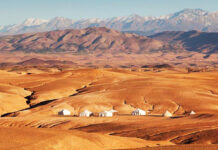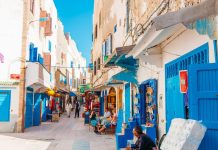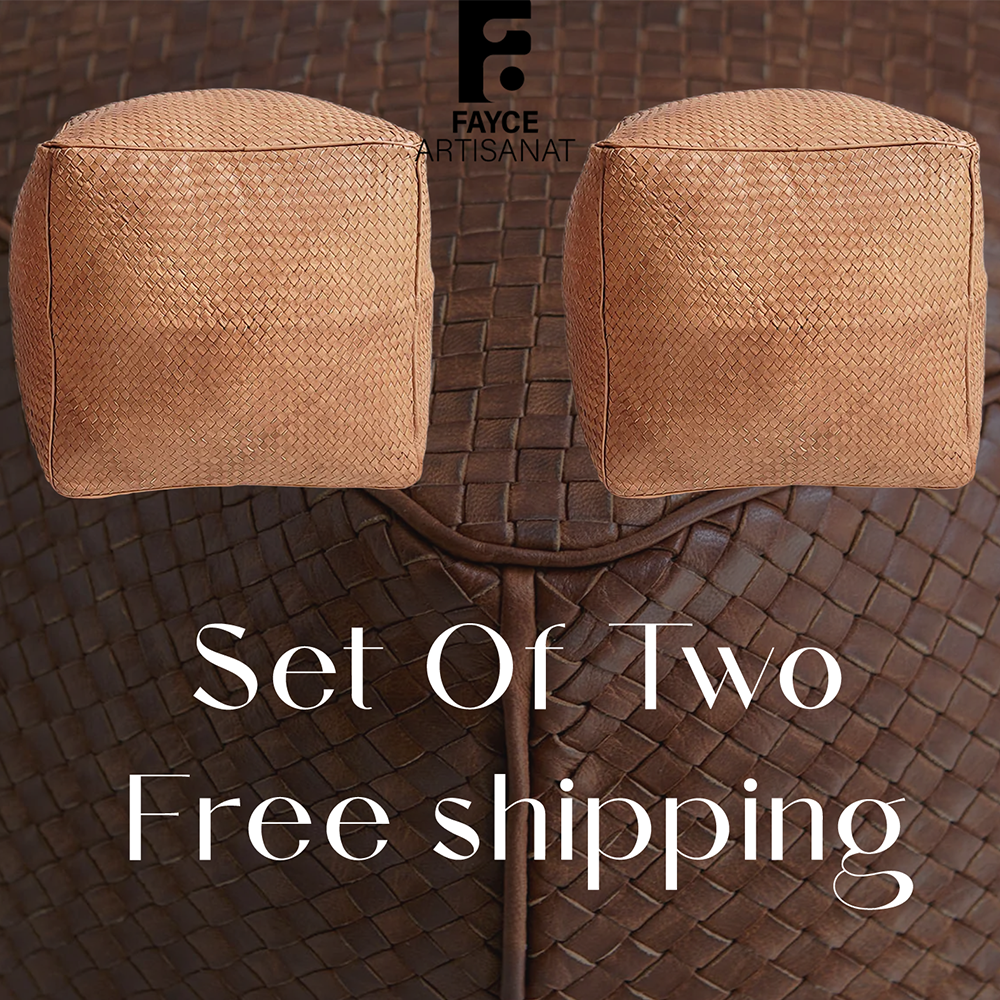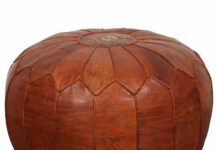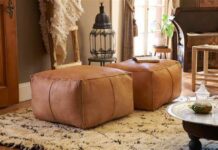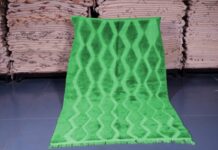In the realm of Moroccan decor, the leather pouf stands out as a quintessential piece that embodies both functionality and aesthetic appeal. This versatile accessory, crafted from high-quality leather, serves as a testament to Morocco’s rich tradition of leather artisanship, which has been revered for centuries.
Moroccan leather poufs are more than just seating options; they are pieces of art that bring a touch of Moroccan culture into living spaces. Traditionally used in Moroccan homes for extra seating, as footstools, or even as side tables when topped with a tray, these poufs are known for their durability and timeless style.
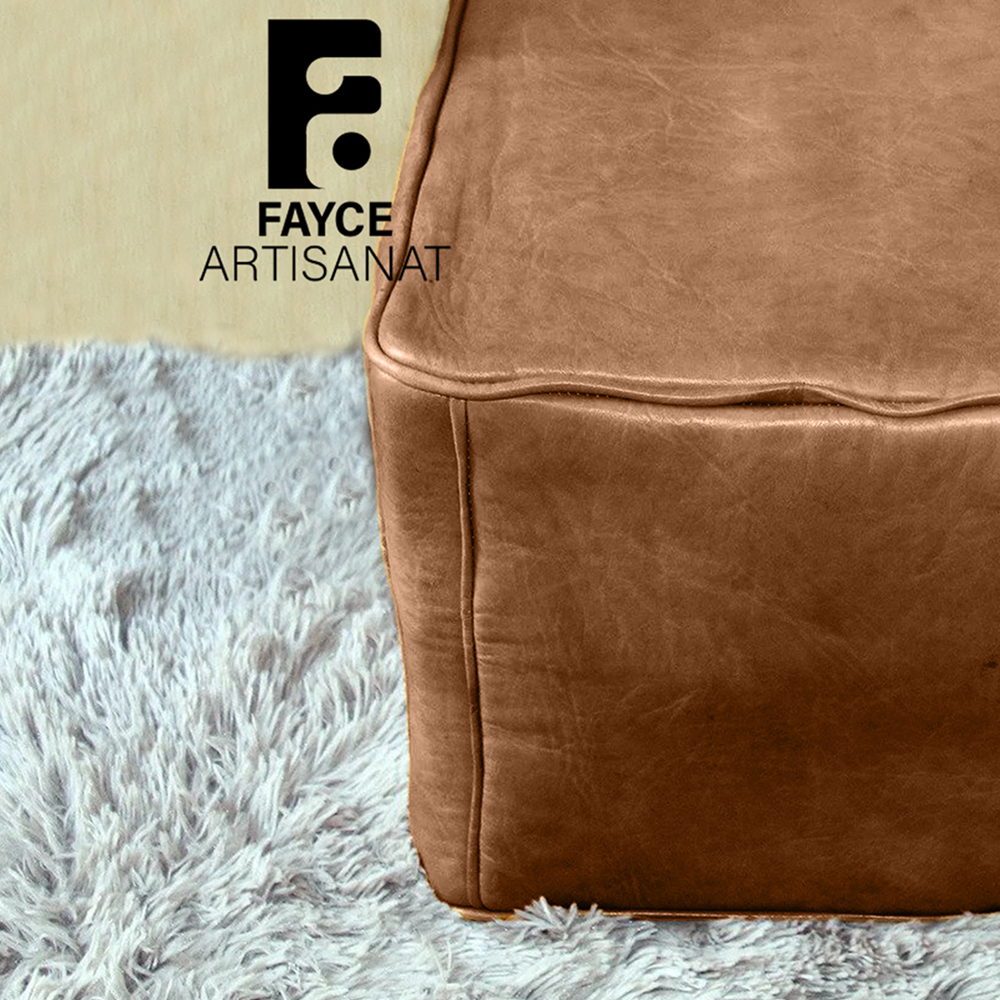
Each pouf is handcrafted by skilled artisans who have inherited their craft through generations. The process begins with the selection of the finest leather, which is then dyed using natural colors. The rich hues obtained are a signature of Moroccan design, ranging from vibrant saffron to deep indigo, earthy browns, and classic black. The leather is then carefully cut, stitched, and embroidered, often featuring intricate patterns that reflect the artisan’s skill and attention to detail.
What sets Moroccan leather poufs apart is their versatility and adaptability to various decor styles. Whether placed in a minimalist, modern setting, a bohemian-style room, or a more traditional or rustic décor, these poufs add a sense of warmth and charm. They not only serve practical purposes but also act as decorative focal points, adding an exotic touch and a sense of worldly sophistication to any room.
Moreover, purchasing a Moroccan leather pouf is a way to support sustainable and ethical craftsmanship. Many artisans produce these poufs under fair trade practices, ensuring that their art supports not only their families but also helps in preserving their cultural heritage.
For anyone looking to enhance their home decor with a practical yet chic element, a Moroccan leather pouf is an excellent choice. It reflects a commitment to quality and cultural appreciation, making it more than just a piece of furniture, but a bridge to Moroccan art and history.








